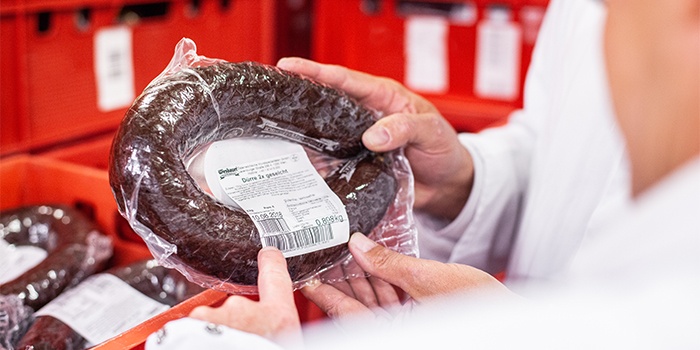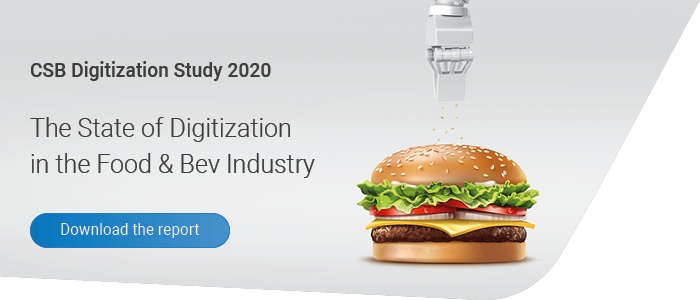The devil is in the detail, the saying goes. Nowhere does this proverb apply more than in the labeling of food. Even minor errors on the label may have severe impacts. Three tips on how to avoid labeling errors.
Mislabeling is one of the most common reasons for food recalls. In some cases, the name does not match the product; in others, the sell-by date is wrong, or the specified weight is not correct. No matter what the flaw on the label, every mistake can have severe consequences. On the one hand, it is about food safety. For example, allergens: If they are not identified correctly, the consumption of the food can be hazardous to the health of many people. On the other hand, it is about a lot of money. Recalls are often very expensive for the manufacturers: To the logistical costs of a recall, add the costs for rework or disposal of the products. In the worst case, even compensation may be claimed although the products as such have no defects.

According to the American Food and Drug Administration (FDA), undeclared allergens and faulty labels are among the most common causes of recalls.
If you want to play it safe, use the following measures to eliminate possible failures in labeling
1. Maintain key data at a central place
Nothing causes more errors than double data storage. Therefore, the following applies to food producers in particular: If recipes are changed, for example, or customers order decoration labels, it is essential that the data has to be adjusted only once. Ideally, the maintenance is performed in the ERP system managing the data, because this is where data is supplied to all subsystems such as labeling units. One of the companies living up to this philosophy is Wiesbauer, Austria’s leading cured sausage manufacturer. At Wiesbauer, all key data is maintained centrally in the ERP system so it is available automatically at each of the company’s four factories. In this way, time-consuming and costly double maintenance is eliminated, which leads to a lower risk of mislabeling and consequently to a reduction of the complaints rate. Additionally, this allows for easy handling of mixed units containing several items in one consumer package.
2. Labels are portrayed directly at the line
A picture is worth a thousand words - and can provide more transparency in the label jungle. In case of frequent product changes, it is a good idea to display the labels on monitors directly at the labeling line. This supports the employees, and errors can be avoided. The everyday business in weigh price labeling has its pitfalls. The number of regulations, laws and trade requirements has been growing for years. The customers are ever more demanding: One customer wants the layout in this way, and the other in that way, there is a great variety of quality labels, a multitude of decoration labels and more and more language versions. With a range of 100 products, this can result in over 2,000 labeling variants. The Belgian company Volys Star has a good 500 different labels. At its facility in Lendelede, monitors therefore clearly display the order that is currently being processed, the products and quantities related to the order, and the labels that need to be attached. The result: Mislabeling and faulty deliveries are virtually down to zero today.
3. IT aided quality tests
IT aided control mechanisms as part of quality management provide more safety also with regard to labeling. Is the text on the label correct? Are all data and the sell-by date correct? Have the right logos and quality labels been printed? It is appropriate and important to ask these questions routinely - ideally, before labels are attached to the products. The following approach is considered as best practice:
- The labeling order is started. Test labels (product and totals labels) are printed, and the content is verified by means of a check list. The line supervisor signs and files the sheet.
- A correct label is printed directly at the machine and compared with the test label.
- After passing the test, weigh labeling will be started.
However, in reality it may actually be quite different. In their daily hectic routines, the employees tend to skip single steps and to “catch up” later. Which often leads to the serious consequences described above. Specific software solutions or modules in the ERP system provide a good way to deal with this problem: They control the process and stipulate the required workflow. First, one step has to be completed before the user can proceed to the next step in the process. Such process reliability not only results in a minimization of errors, but also in enhanced control and transparency. Software-based processes are documented automatically, allowing for easy reproduction and assessment.
Playing safe
Competent and reliable handling of data is the vital instrument to eliminate mislabeling. It is the only way to prevent that incorrectly labeled products are shipped to the customers. The right software system is therefore at the center of risk management: It increases food safety, saves money, work and trouble. Plus, it provides transparent documentation to customers, consumers and lawmakers. Play safe.


